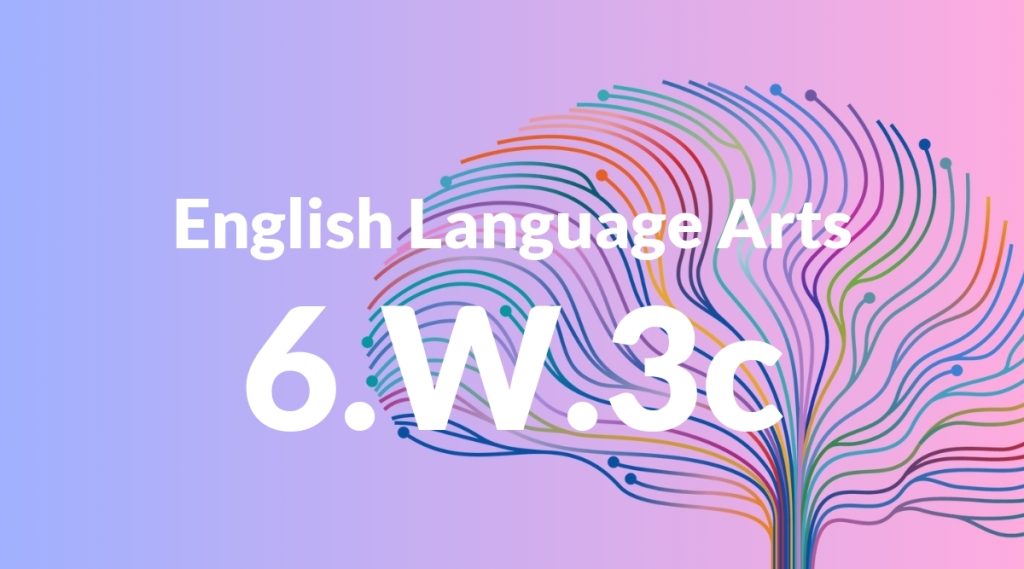Standard: 6.W.3c – Use a variety of transition words, phrases, and clauses to convey sequence and signal shifts from one time frame or setting to another.
Grade level: Grade 6
Subject: English Language Arts
Domain: Writing
Teacher Overview
This standard focuses on using transition words, phrases, and clauses to convey sequence and signal shifts in time or setting. Mastery of this skill is crucial for developing coherent and cohesive writing, which is essential for effective communication in both academic and real-world contexts. Students should have a solid understanding of basic sentence structure and the ability to write coherent paragraphs. Familiarity with conjunctions and prepositions will also be beneficial.
After mastering this standard, students will be able to write more complex and organized texts. They will be better prepared for advanced writing tasks in later grades and more capable of crafting well-structured arguments and narratives.
Common Misconception 1
A common misconception is that all transition words serve the same purpose. This is incorrect because different transitions are used to signal different types of relationships between ideas, such as cause and effect, contrast, or sequence.
Intervention 1
To address this misconception, provide targeted instruction on the various functions of transition words and phrases. Use graphic organizers and practice exercises to reinforce the appropriate use of each type.
Common Misconception 2
Another misconception is that transition words are only necessary at the beginning of sentences. In reality, transitions can appear at the beginning, middle, or end of sentences and paragraphs to improve the flow and coherence of writing.
Intervention 2
To remediate this, offer examples and practice opportunities that demonstrate the use of transitions in various positions within sentences and paragraphs. Encourage students to revise their writing to include transitions in multiple locations.
Prerequisite Knowledge
Students should understand basic sentence structure and be able to write simple paragraphs. They should also be familiar with basic parts of speech, such as conjunctions and prepositions.
Subsequent Knowledge
Students will be able to write more complex narratives and expository texts, clearly showing the relationship between events and ideas. They will also improve their ability to craft persuasive arguments by effectively signaling shifts in their reasoning.
Instructional Activities
- Create a timeline of events using transition words to connect each event.
- Write a short story with clear shifts in time and setting, using appropriate transitions.
- Develop a procedural text, such as a recipe, emphasizing the sequence of steps with transition phrases.
- Revise a rough draft by adding or improving transitions to enhance coherence.
- Analyze a passage from a book, identifying and discussing the transitions used by the author.




